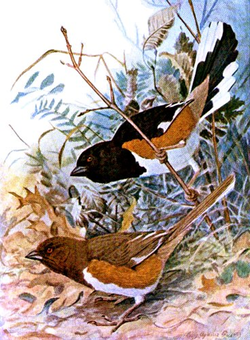Safe Bird Nesting Material
Not all advice on safe bird nesting material is actually safe for birds. We’ve been doing it wrong for year and causing harm to our feathered friends.
 For our family the birds and woodland creatures that visit our backyard are part of the family. We love seeing a new bird visit our feeding stations or pick the seeds out of our black-eyed susan flowers. The white, yes they are white, squirrels are always a treat. Their grey cousins are fun and we have spent hours watching them chase each other from tree to tree. Our two favorites might just be the hummingbirds and the chipmunks. Sadly, 2014 has been a banner year for snakes and our chipmunks may be gone.
For our family the birds and woodland creatures that visit our backyard are part of the family. We love seeing a new bird visit our feeding stations or pick the seeds out of our black-eyed susan flowers. The white, yes they are white, squirrels are always a treat. Their grey cousins are fun and we have spent hours watching them chase each other from tree to tree. Our two favorites might just be the hummingbirds and the chipmunks. Sadly, 2014 has been a banner year for snakes and our chipmunks may be gone.
We have several pairs of Towees that live in our yard. They are the beautiful robin-sized orange and black birds shown in this drawing. It was offered for free by ReusableArt.com.
From time to time, I’ll share photos, anecdotes and useful information about the wildlife that calls our backyard home or just pass through for a visit.
Not all advice on safe bird nesting material is actually safe for birds. We’ve been doing it wrong for year and causing harm to our feathered friends.
Green Carolina anoles are charming little lizards that can be found scampering around much of the Carolinas. They make great first-time reptile pets.
Do you want to know how to keep bees away from hummingbird feeders? Hornets were our problem and the solution was cheap and easy once we figured it out.
How to make hummingbird food? You just need sugar and water and the right ratio to make as much or as little as your hummingbirds can consume daily.
One of our favorite backyard visitors are the tiny ruby throated hummingbirds. North Carolina is one of several summer homes for these charming birds.